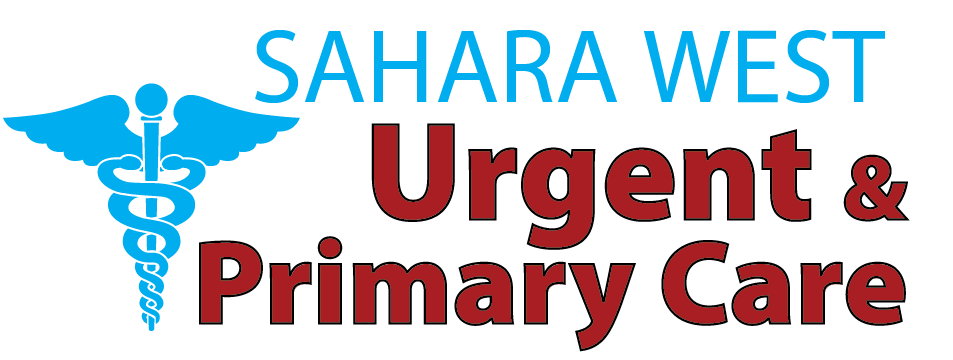Workers’ compensation is a protective net that is of utmost significance in safeguarding the employer and the worker. It ensures that employees who are injured by work-related accidents are provided medical care, compensation of income, and, occasionally, permanent disability benefits with only a cap on the liability of employers. It is an all-inclusive guide about the nature of workers’ compensation, how it works, what it is, who pays, and why you should care about it in your workplace.
Defining Workers’ Compensation
The workmen’s compensation is a lawful and faultless form of insurance. It also guarantees that the employees who have sustained injuries during work or suffered a disease due to work-related factors get the necessary support without the stress of demonstrating that negligence. Employers, in their turn, are relieved of most litigation on workplace accidents so long as they have the insurance coverage most employers have to have. States have different laws, but the basic aim is still the same: to safeguard people and companies using a balanced and state-regulated process.
Core Principles
No-Fault Coverage
The employees are entitled to benefits, whether the fault is on their part or not. This implies that regardless of who was the cause of the incident, the employer, the employee, or a fellow employee, benefits will be provided as long as the incident happened during employment.
Exclusive Remedy
By accepting compensation benefits, the workers usually waive the right to sue their employer. This exclusive remedy rule discourages lawsuits, which leads to faster settlement of claims.
Mandatory Employer Responsibility
The majority of employers are required to have workers’ compensation insurance or be self-insured. Noncompliance may lead to a fine, penalty, or criminal prosecution.
Key Benefits Explained
Medical Expense Coverage
Insurance provides all the reasonable and necessary medical treatments as a result of work-related injuries or occupational diseases. This incorporates visits to the doctor, surgeries, prescriptions, rehabilitation services, and the required assistive devices such as wheelchairs or canes.
Wage Replacement
Workers unable to perform their job because of a workplace injury can receive partial wage compensation.
- Temporary total disability (TTD): Provides approximately two-thirds of the worker’s average weekly wage during recovery.
- Permanent partial disability (PPD): Compensates for lasting impairments when injured workers return to work in a reduced capacity.
Death and Survivor Benefits
In case of a fatal accident, workers’ compensation can provide a lump sum payment or periodic payments to the survivors. The cost of burial and funeral is usually paid, and this relieves the families of the financial burden.
Who Is Covered—and Who Isn’t
Covered Employees
- Full-time, part-time, and seasonal workers
- Employees of all skill levels
- In some states, even volunteers working for nonprofit organizations
Exempt or Excluded
- Independent contractors (but misclassification can trigger penalties)
- Casual workers in certain states
- Domestic or agricultural workers, depending on local statutes
- Executives or owners who may opt out under specific conditions
Who Pays for Workers’ Compensation?
Insurance Premiums
Companies usually pay premiums to individual insurance organizations, depending on their payroll, industry risk, and claims history. The high-risk areas, such as construction, attract higher rates than the low-risk areas, such as office administration.
Self-Insured Employers
Stable organizations with a large claims history can decide to self-insure. Although they settle claims directly, they enjoy the possibility of cost savings and more control over claim management.
State Compensation Funds
Where there are not many choices in the private market, state money comes in to cover and set prices.
Employee Costs
Workers pay no premiums. The financial responsibility for coverage lies solely with employers.
Cost Determinants of Coverage
Industry Classification
Businesses are classified into pools of risk by the insurers. More dangerous industries, such as manufacturing or transportation, have steeper premiums.
Payroll and Workforce Size
The amount of premiums is determined as a percentage of the payroll- the more workers and the higher the wages, the more the total amount of premiums.
Experience Modifier
An experience modifier (X-Mod) is an indicator of claims history by an employer. A history of minimal claims reduces the X-Mod and the insurance cost, whereas a bad record increases it.
State-Specific Rate Structures
The states have different rate schedules and regulations, and this affects the cost of premiums and claim handling procedures.
Types of Workers’ Compensation Insurance
Coverage A: Standard Workers’ Compensation Insurance
This simple policy provides workplace injuries and occupational illnesses, providing medical and wage benefits to qualified employees.
Coverage B: Employers’ Liability Insurance
Coverage B is used to cover employers against lawsuits that are not covered by the normal coverage, e.g., claims of willful injury or third-party liability.
Navigating the Claims Process
Step-by-Step Guide:
- Report the incident promptly: Notify the supervisor or HR department as soon as the injury occurs.
- Medical evaluation: Visit a designated healthcare provider for immediate assessment and documentation.
- Claim filing: The employer or medical provider submits the claim to the insurer.
- Insurer review: The insurance company evaluates the claim, approving or disputing it.
- Benefit distribution: Once approved, medical bills are paid, and wage benefits begin.
Early reporting and thorough documentation significantly improve claim success.
Independent Contractor Exemption
Independent contractors are not usually covered by workers’ compensation, but misclassification can be subject to fines. The courts consider such factors as the level of control and the type of work relationship. Employers can face legal and financial consequences for misclassifying an employee as a contractor.
Detecting and Preventing Fraud
Workers’ compensation fraud raises premiums across the board. Common types include:
- Exaggerating or fabricating injuries
- Collecting benefits while working elsewhere
- Falsifying medical evidence
Employers and insurers combat fraud through surveillance, medical reviews, and workplace monitoring to maintain system integrity and cost control.
Workers’ Compensation Exemptions
- Domestic employees: In-home service workers may be exempt depending on the jurisdiction.
- Agricultural labor: Farmers or seasonal workers may be excluded in some states or covered separately.
- Casual laborers: Temporary hires may not always be covered under standard policies.
Workers’ Comp vs. General Liability Insurance
- Workers’ Compensation: Covers employee illnesses or injuries at work.
- General Liability: Covers third-party injuries or property damage not linked to employees.
Both types of insurance are essential, but serve distinct purposes.
Cost Management Strategies for Employers
Safety Programs
The frequent safety training and hazard evaluation can considerably decrease the number of accidents at work and insurance claims.
Return-to-Work Plans
The provision of light-duty or transitional jobs enables injured workers to re-enter the workforce, reducing claim lengths and expenses.
Choosing Insurers
Long-term savings can be achieved by comparing quotes, reviewing service levels, and considering state fund options.
Guidance for Injured Employees
Report Immediately
Delaying incident reporting can result in delayed benefits or claim denial.
Stay on Prescribed Treatment Plans
Following medical advice bolsters claim credibility and encourages faster recovery.
Keep Detailed Records
Medical receipts, incident reports, and communication logs help support claims and appeals.
Seek Expert Advice
If a claim is denied, workers should ask for a hearing or consult a labor board representative or attorney.
Modern Workers’ Compensation Trends
Remote Work Challenges
With hybrid and remote work arrangements increasing, determining if an injury occurred “on the job” has become more complex, requiring clearer policies.
Mental Health Claims
Work-related mental health conditions—like stress, PTSD, or burnout—are being recognized more frequently under workers’ compensation laws.
Predictive Analytics in Risk Management
Employers are leveraging data analysis to identify and mitigate workplace hazards, reducing incidents and insurance losses.
Conclusion
Workers compensation In Las Vegas delivers essential medical, wage, and survivor benefits to injured employees while protecting employers from lawsuits. It hinges on principles of no-fault coverage, employer responsibility, and mandatory compliance. Empowered employers can manage costs through safety programs and strategic insurance choices, while informed employees can advocate for their rights effectively.
If you’re a business owner, ensure your coverage aligns with legal requirements and risk exposures. Injured employees should initiate their claim immediately and follow official processes diligently. To schedule your appointment with the highest standard of care, visit Sahara West Urgent Care on our website, where you can also explore more informative blogs.
FAQs
What does “exclusive remedy” mean in workers’ compensation?
This means receiving compensation benefits typically prevents employees from suing their employers over the same injury.
Can mental health be a workers’ compensation claim?
Yes—if the condition is proven to result from work conditions and meets state-specific criteria.
What if my claim is denied?
You can appeal through your state’s workers’ compensation board. You may have the right to a hearing, legal representation, and expert testimony.
Does my job affect coverage cost?
Yes. High-risk industries pay more in premiums than low-risk ones. Your claims record also plays a major role.
What should I do if I’m misclassified as an independent contractor?
Report it to your state labor department. Employers could face fines and must provide back benefits if misclassification is confirmed.





